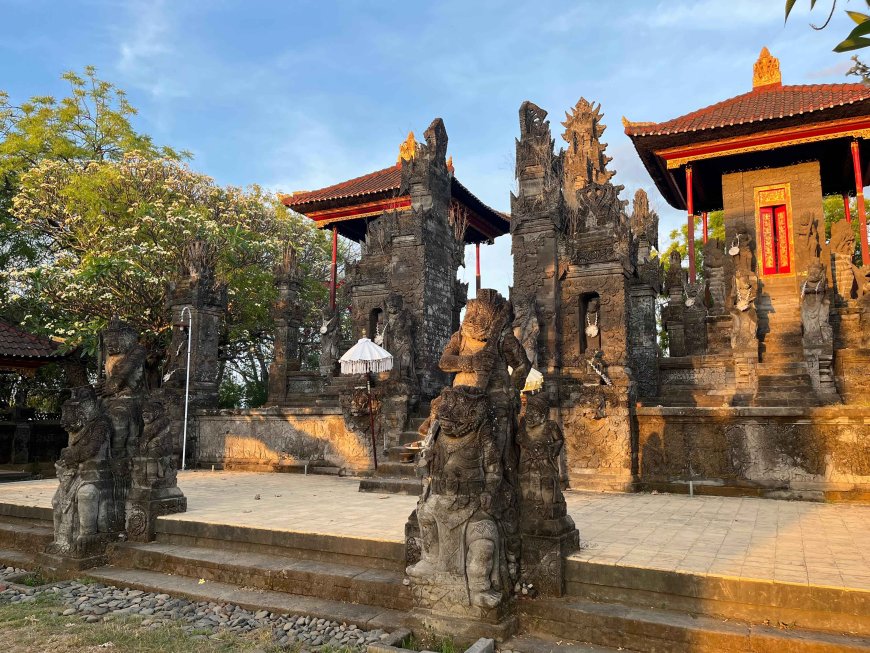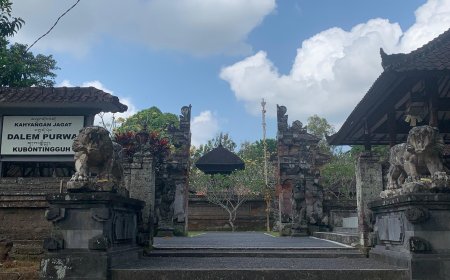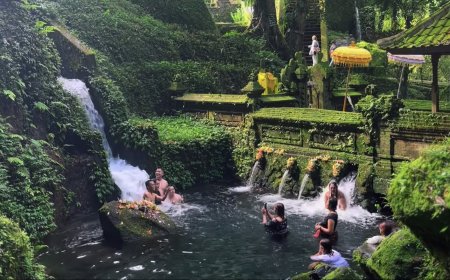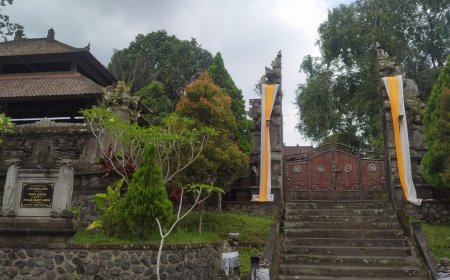Pura Maduwe Karang: A Timeless Spiritual and Natural Heritage in North Bali
Pura Maduwe Karang is one of the largest and most historic temples located in Kubutambahan Village, Buleleng Regency, North Bali. The name "Maduwe Karang" literally means "owner of the land," reflecting the temple's function as a place of worship dedicated to Dewi Pertiwi, the goddess who protects the land and agriculture. This temple plays a significant role in maintaining the balance between humans, nature, and spirituality.

Bali, known as the Island of a Thousand Temples, is home to many temples with unique cultural and historical backgrounds, including Pura Maduwe Karang. This temple stands out due to its significant role for the agrarian community in the surrounding area. It serves as the center for various traditional ceremonies and religious rituals held to seek blessings for the fertility of the land and protection for the harvest. These rituals not only connect the community with spiritual forces but also help maintain harmony with nature, which is an integral part of their lives.
As one of the largest temples in North Bali, Pura Maduwe Karang features beautiful architecture with various reliefs and statues that depict traditional aspects of Balinese life. Every carving and ornament in the temple holds deep meaning, reflecting the Hindu Balinese belief that combines reverence for nature with spiritual elements of daily life. The temple serves not only as a sacred place but also as a reflection of the close relationship between humans and the universe.
Pura Maduwe Karang has several pelinggih (sacred shrines) dedicated to various manifestations of Dewi Pertiwi and other deities related to fertility and prosperity. Each pelinggih in the temple plays a specific role in ceremonies and prayers, providing a place for Balinese Hindus to offer offerings and worship the gods and goddesses they believe in. Balinese Hindus frequently visit this temple to seek protection for their agricultural land and the success of their harvests.
The Inner Temple (Source: Personal Collection)
In addition to being a place of worship, Pura Maduwe Karang is also a cultural tourist destination that attracts many visitors from both domestic and international origins. Visitors who come to this temple are greeted by the distinctive beauty of traditional Balinese architecture, from the grand entrance gates to the intricate carvings on the temple walls filled with deep philosophical meaning. Walking around the temple grounds, visitors can feel the peaceful and serene aura, allowing them to reflect on the connection between humans, nature, and spirituality.
The beauty of Pura Maduwe Karang is not only found in its structures but also in its location, which is set amidst the lush rural surroundings. The fresh mountain air and views of vast rice fields around the temple create a harmonious atmosphere between nature and the sacred site. Every detail of this temple symbolizes the balance between the material and spiritual worlds, a concept highly respected in Balinese Hindu life.
In addition to its spiritual appeal, Pura Maduwe Karang also offers historical significance, making it one of the most important temples in North Bali. Despite being hundreds of years old, the temple continues to be a focal point of religious life for the local community. The traditional ceremonies held at this temple not only preserve the customs of their ancestors but also strengthen the sense of togetherness and the identity of the local community.
For Balinese Hindus and visitors seeking an authentic spiritual experience, Pura Maduwe Karang is a captivating destination. Through meaningful religious rituals, this temple unites human life with nature and divine power, creating harmony that endures amid the modern world. The existence of Pura Maduwe Karang is living proof of how the Balinese people maintain a balance between nature, spirituality, and tradition, passed down from generation to generation.
The Outer Temple (Source: Personal Collection)
With all its beauty and significance, Pura Maduwe Karang is not just a place of worship but also a symbol of spiritual strength and the close connection between humans and nature. In every corner of the temple, tranquility and peace radiate, making anyone who visits feel closer to nature and Sang Hyang Widhi Wasa, the Almighty God in the Hindu Balinese belief.































































